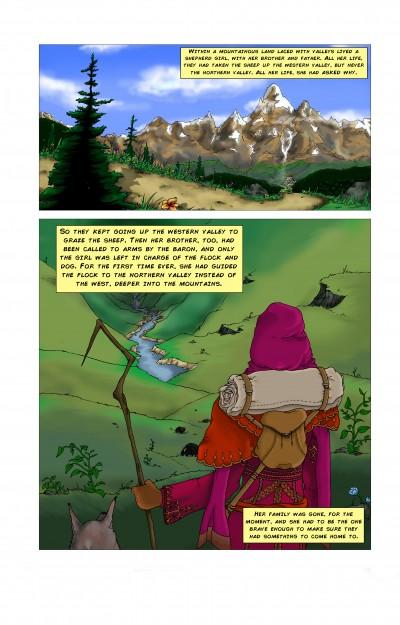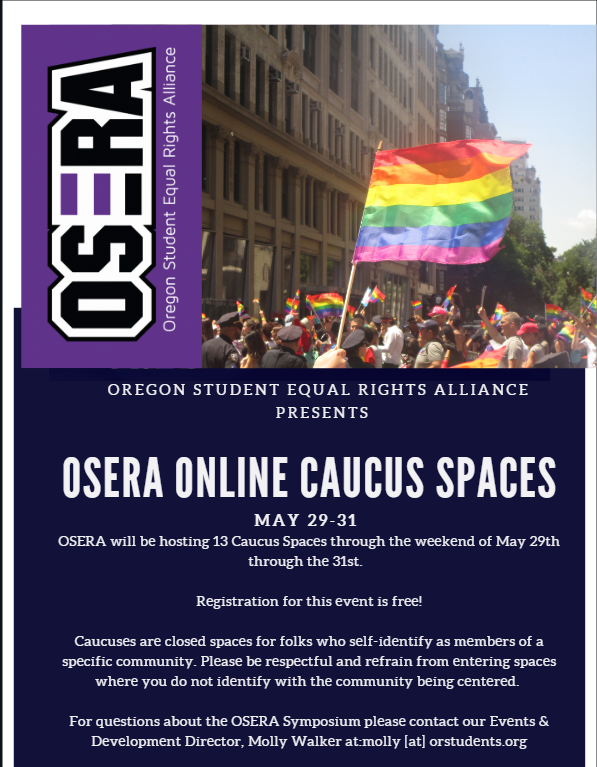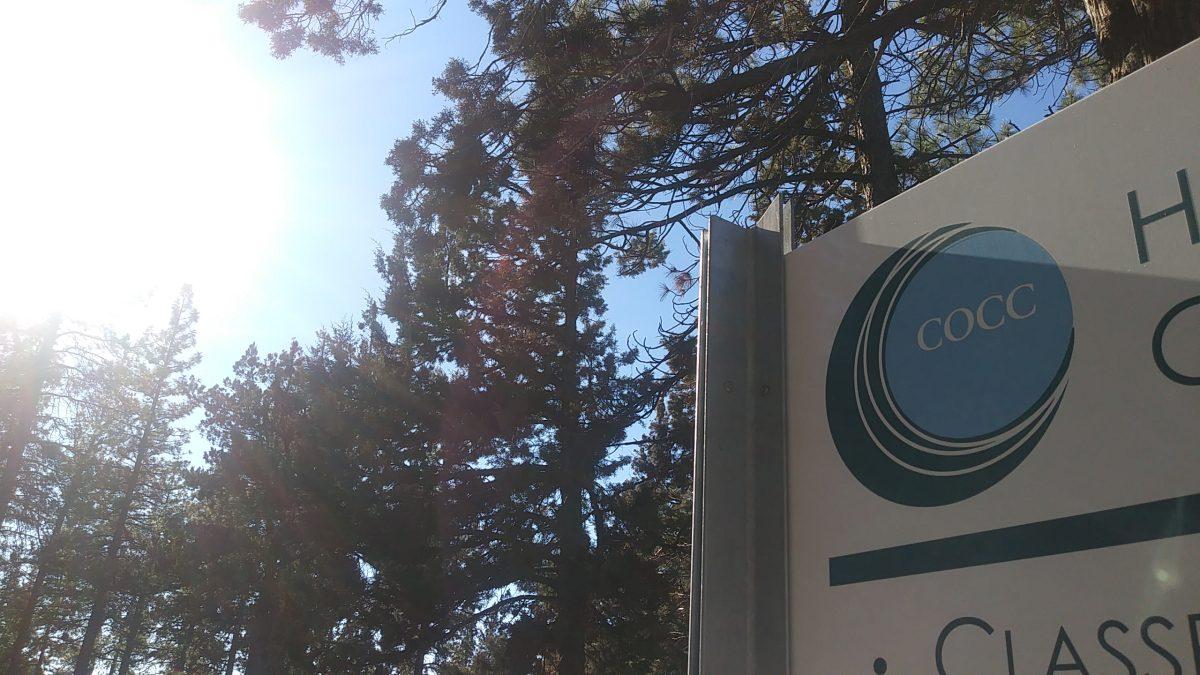New illustration class is creating a graphic anthology in one term
Isaac Peterson’s students have 10 weeks to create a 100-page graphic anthology. Every Friday, the Art 199 Illustration class meets for 5 hours of lecture, discussion, one-on-one and group work with Peterson, an art professor at Central Oregon Community College. Genres range from office comedy to urban fantasy to Biblical interpretations, and styles run an even wider gamut. The Broadside interviewed Peterson to find out why one professor and a small group of students would try to complete such a Herculean task.
Broadside: Who was behind the genesis of the Illustration class?
IP: I asked Bill Hoppe to give me a 199 class in narrative illustration and I was very nervous it wouldn’t fill because it was a special section. I made some posters and hoped for the best, watching the numbers slowly increase between quarters. When I had 12 I felt satisfied andstopped watching it, but on the first day I was shocked to find 24 students! Some people dropped but it is still a big class and has the most incredible work energy. I met Tony Russell, who teaches writing, and discovered he’s teaching a Graphic Novels as
Literature course so there has been a certain synchronicity. I’ve been teaching art for 15 years and I’ve never had a course with such incredible positive energy. It is electrifying. The class is 5 hours long and I was worried it would be exhausting, but it goes by too fast and everyone wants to keep going.
Broadside: What does a class day look like? Is there any instruction or is
it all drawing and hands-on work?
IP: Each class starts with a student presentation on a comic book
artist or children’s book illustrator. In addition to giving some
bio and showing the artist’s work, students also have to create
a drawing lesson for the class. Even though these lessons are
just small details, learning a single tool in drawing can
transform your entire style. This is followed by one of my
lessons on drawing or structuring narrative. This week we are
studying how to create ink textures. The rest of the class is one
on one and group work where we all draw together and discuss
and edit the structure of each story’s narrative. I’ve had some
incredible guest artists show their work in the class. Donald
Yatomi, the lead concept artist at Sony Playstation/ Bend Studio
took us through his creative process in fine detail. Students
were speechless — no one knew a world-class game studio
existed in Bend, first of all, and the simplicity and utter
creativity of Yatomi’s concept art blew us all away. I think in
that one moment, student perception of art practice suddenly
shifted from “silly hobby” to “possible future career.”
Broadside: What are some common challenges you see your students
working to overcome?
IP: Narrative illustration means that storytelling comes first
and that the images serve the story. Artistic ambition can
sometimes work counter to story telling! Some students fret
over small details — a tree doesn’t look the way they want it
to, their anatomy isn’t as good as it could be, etc. The first
thing we do is mock up the story with stick figures, and I say,
“Your story made me laugh when it was just stick figures!” The
primary rule of narrative illustration is not to stop the story for
any reason. Don’t give yourself an excuse to stop! Finish the
story and leave the mistakes in it. We are asking: “What story
do you really want to tell?” and that is a surprisingly intense
question. The answer truthfully communicates the feelings and
experiences of the story teller, even if it emerges in the form
of science fiction. It’s easy to look for little reasons to stall the
story, in particular saying the art isn’t good enough. But often
these are excuses created to stop the story from emerging
because it is so meaningful to them that they are afraid of
telling it.
Broadside: What is some of the literature that students draw inspiration
from, if you all talk about inspiration? (Being a graphic novel
nerd myself, I’m keen on some name-dropping.)
IP: Each week there is a presentation on a narrative artist. We
study Moebius, Mo Willems, Maurice Sendak. We also focus on
local Oregon independent cartoonists such as Matt Wagner and
Portland’s Dark Horse Comics. A major focus of the course is
giving illustrators their due and discussing some of the terrible
injustices wreaked upon visual creators. Siegel and Shuster,
creators of Superman, received a pittance from DC comics
rather than the royalties they deserved, and Jack Kirby, the co-creator of what are now multi-million dollar properties such as
The X-Men, The Avengers, Thor and Iron Man never saw the
profits of his creations. We also study forgotten masters such
as Kay Neilson, a masterful illustrator who created the definitive
images for Hans Christian Anderson (the movie Frozen is based
on his illustrations), and the original illustrator of the Wizard
of Oz, W.W. Denslow. The creator of Popeye, E.C. Segar, is
a veritable fountainhead of creative innovation who created
visual and cultural templates which persist today, but we don’t
remember their origin (for instance, he invented the word
“goon”).
Broadside: You all set out to put together an anthology in ten weeks. How’s it going? Does it look like you’ll reach your goal?
IP: Oh my goodness, this class has been a tsunami of creativity. I
can’t believe the incredible things students pull out of the air
every week, and the incredible scope of their vision. I look
forward to learning more about their characters each week and
get so excited to see the new pages. As of this week (week
six) I’d say we have about 40 pages as a group, and I think by
the end of class we might have about 75. I’m lucky to have a
studio assistant, Marcy, who scans all of our work at the library
each week and sends it to Dropbox. Then together we bring
the scans into InDesign and assemble and rearrange the book.
We will release the finished product on CreateSpace, a publishing service owned by
Amazon, so anyone will be able to buy it when it is
finished. All I can say is this has been the best class I’ve ever
had in 15 years of teaching, and my students’ infectious energy
has me staying up every night working on my own comics as
well.
Kiley Christiansen
Christiansen’s grandmother is faculty at COCC; she saw a flier for the graphic novel class and thought Christiansen would be interested in it. Christiansen has had this story idea floating around in her head for over a year.
Christiansen has been drawing for a very long time and mostly draws the things she sees in her head, only using the occasional model for anatomical reference.
“Originally, I thought it would be more of just written-down word,” Christiansen said, “but I had all these images in my head and I just thought it would be just a shame not to put them down in ink and pen.”
Cecelia Kirth
Kirth gets ideas for stories all the time, but this was one that stuck. For Kirth, who won the Best in Illustration award at the annual COCC student art show this year, it’s a matter of getting the ideas down on paper.
“Even if I only get a tiny part of it, I’ll come back to it and remember,” Kirth said. “I have a lot of ideas riding around all the time through my head.”
Kirth will be graduating after fall term, and intends to keep illustrating as a hobby but isn’t interested in publishing her work as more than that.
Josh Bickford
Bickford is adapting a friend’s novel to graphic form, a process which presents it’s own unique challenges.
“Some parts are pretty difficult,” Bickford said. “I’m definitely having to switch around some of the dialogue where there’s a lot of description. It’s a lot of manipulating that to work better in the comic panel forms.”
But with unique challenges come unique opportunities, and Bickford has had lots of fun designing characters for the story.
“I enjoy comics and I wanted to do something more with drawing, but maybe not the classic style that the other classes offer currently,” Bickford said.
Scott Greenstone
Student interviews by Stewart Shaw
The Broadside














